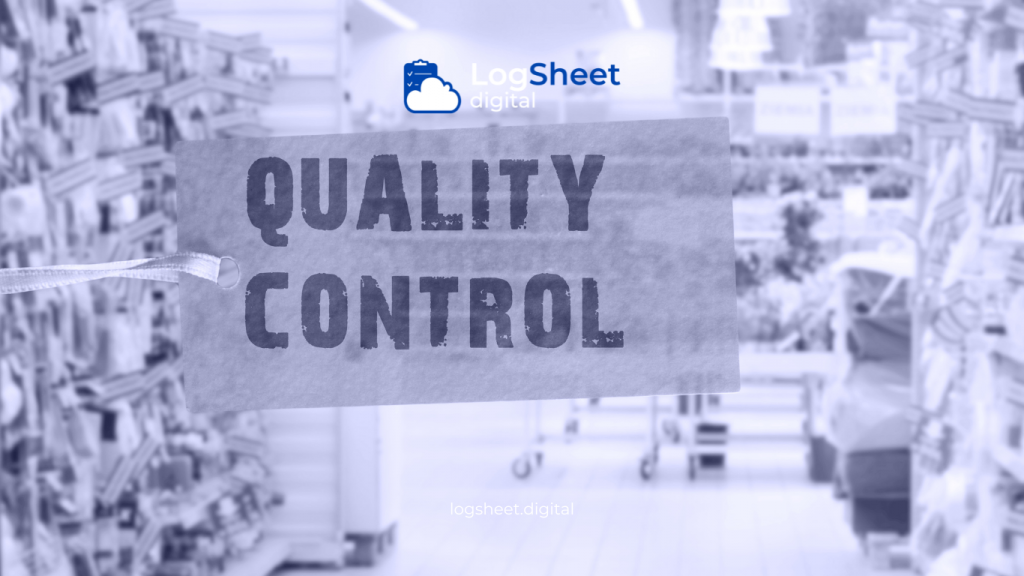In the digital era, quality control has become a crucial aspect in maintaining product and service standards. Accurate quality control processes not only enhance customer satisfaction but also reduce operational costs and losses. Digital logsheets have become a revolutionary tool in improving the accuracy of quality control by providing a more efficient and integrated recording and monitoring system. This article will discuss how digital logsheets can enhance the accuracy of quality control, the challenges faced in their implementation, and strategic steps for integrating this technology into your quality control processes.
What is a Digital Logsheet?
Digital logsheets are electronic recording systems that replace traditional paper-based logsheets. This tool is designed to collect, store, and manage data digitally, allowing real-time access and deeper data analysis. With digital logsheets, information about production processes, quality inspections, and maintenance can be managed more organized and efficiently.

Read more: Digital Logsheets: A Revolution in Equipment Safety Monitoring and Maintenance
Benefits of Digital Logsheets in Quality Control

Read more: Improving Product Quality with Digital Logsheets
1. Increased Data Accuracy
One of the main benefits of digital logsheets is increased data accuracy. By automating the recording process, manual errors that often occur in paper-based systems can be reduced. Digital logsheets use data validation technology to ensure that the information entered is accurate and meets established standards. This helps in generating more precise and reliable reports.
2. Real-Time Access and Quick Response
Digital logsheets allow for real-time data access from various locations. This enables quality control teams to quickly identify and respond to issues arising during production processes. With information available instantly, decisions can be made faster, reducing downtime and improving operational efficiency.
3. Efficiency in Quality Control Processes
Manual data recording and processing can be time-consuming and prone to errors. Digital logsheets automate many of these tasks, reducing the time needed to manage data and allowing staff to focus on more critical tasks. By reducing the need for manual recording, the quality control process becomes more efficient and productive.
4. Advanced Data Analysis Capabilities
Digital logsheets provide powerful analysis tools that allow companies to evaluate data in-depth. With these analytical features, companies can identify patterns, trends, and potential issues before they become significant problems. Deep data analysis aids in strategic planning and better decision-making in quality control processes.
5. Data Security and Transparency
Digital systems offer higher levels of security compared to paper-based recording. Data in digital logsheets can be protected with passwords and encryption and is easier to track and audit. This reduces the risk of data loss or damage and ensures that sensitive information remains secure.
Challenges in Implementing Digital Logsheets for Improving Quality Control Accuracy

Read more: Optimizing Quality Control through Digital Logsheets
1. Initial Investment
One of the main challenges in implementing digital logsheets is the initial investment required for hardware and software. Although the upfront cost may be high, the long-term benefits of the system often outweigh these costs. Companies need to evaluate the cost versus benefit to ensure that this investment aligns with their budget and goals.
2. Employee Training Needs
Employee training is a crucial aspect of implementing digital logsheets. Staff must understand how to use the new system effectively to ensure that data entered is accurate and meets established standards. Adequate training requires time and resources but is essential for the success of the new system.
3. Digital Data Security
Digital data can be a target for hacking or malware, so companies must implement strong security systems to protect sensitive information. Using encryption, strong passwords, and continuous security monitoring is critical to safeguarding data from potential threats.
4. Resistance to Change
Transitioning from a manual to a digital system often encounters resistance from employees. Some staff may feel uncomfortable with new technology or be concerned about changes in work processes. Effective change management and adequate support can help overcome these barriers and facilitate a smooth transition.
Steps for Implementing Digital Logsheets for Improving Quality Control Accuracy

Read more: Benefits of Using Digital Logsheets for Companies and Employees
1. Assess Company Needs
The first step in implementing digital logsheets is to assess the specific needs of the company related to quality control. Understanding these needs helps in selecting the right solution that aligns with the company’s processes and goals. This assessment also involves identifying areas where digital logsheets can have the greatest impact.
2. Choose the Right Software
Select digital logsheets software that meets the company’s needs and can be integrated with existing systems. Ensure that the software offers necessary features for quality control, such as real-time tracking, data validation, and analysis tools.
3. Conduct Comprehensive Training
Training is a key component of implementing digital logsheets. All employees who will use the system should receive training covering all aspects of system use, from data entry to utilizing analysis features. Comprehensive training helps ensure that staff can use the system effectively and efficiently.
4. Integrate with Existing Systems
Integrate digital logsheets with existing management systems to ensure smooth data flow and avoid disruptions in business processes. This integration requires coordination between IT and quality control teams to ensure that the new system works well with existing systems.
5. Monitoring and Evaluation
Once you implement the system, regularly monitor and evaluate it to ensure it functions well and delivers the expected benefits. This evaluation includes assessing data accuracy, process efficiency, and user satisfaction. Based on the evaluation results, make necessary improvements and adjustments to enhance the system.
Conclusion

Read more: Digital Logsheets: Quality Control in Industry
Digital logsheets have revolutionized the way companies manage quality control by offering significant benefits such as increased data accuracy, real-time access, process efficiency, advanced data analysis capabilities, and better data security. Despite the challenges in implementation, such as initial investment, training needs, data security, and resistance to change, the right strategic steps can help overcome these barriers and maximize the benefits of digital systems.
By adopting digital logsheets, companies can improve their quality control accuracy, reduce operational costs, and enhance customer satisfaction. This digital transformation is not just an investment in technology but also a strategic step toward continuous improvement in quality control processes.





comments (0)